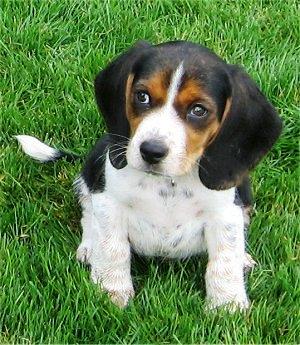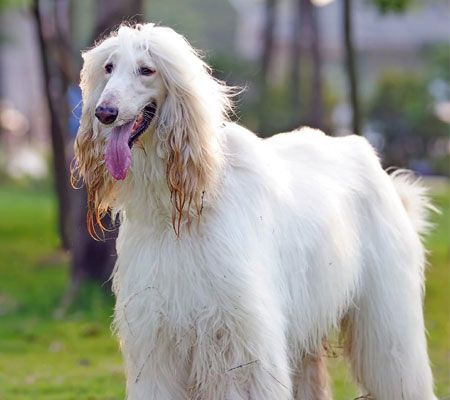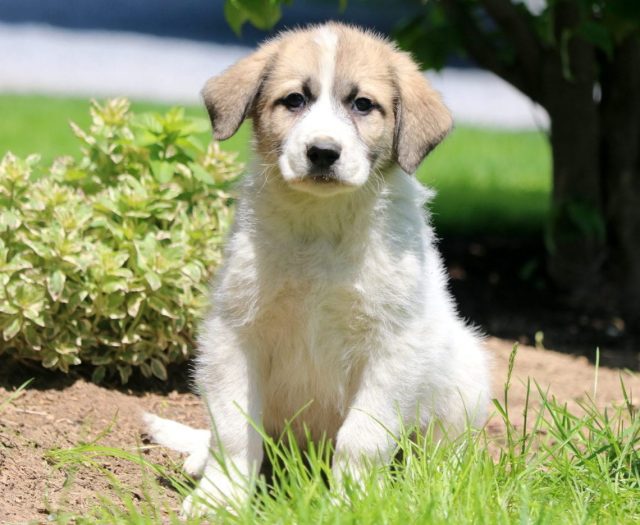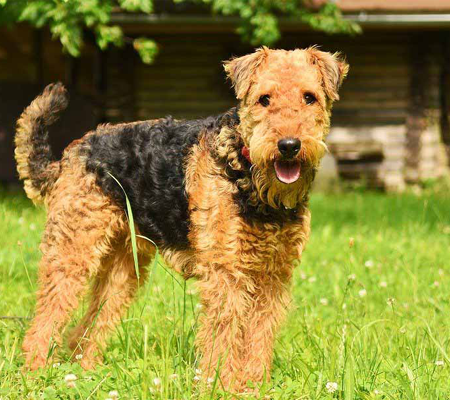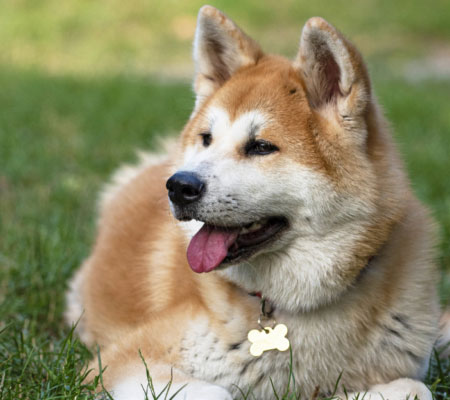The American foxhound is a remarkable canine
breed with a long history and a lot of heart, and while it looks a lot like one
of America's most popular dogs, it's more than just a larger Beagle. Despite
its British and European ancestors, the diligent foxhound is all American. This
lanky and boisterous hound is well known for its musical bay and friendly
demeanour, and is one of the few breeds natively developed in the United
States.
The American foxhound was formerly regarded for
its pack hunting abilities and is now a popular option among hunters,
especially those on horseback. However, because to its easygoing attitude and
amiable personality, the breed has earned a place in family homes and hearts in
recent years. Just be aware that this breed has endless energy that has to be
channelled on a regular basis in order to avoid undesired and harmful
behaviour. You'll get a loyal and even-tempered dog if you can give the correct
atmosphere for the American foxhound.
American Foxhound Highlights
Breed Size
Large
Nature
Gentle, Friendly, Playful, Outgoing, Willful
Energy Level
Active
Intelligence
High
Barking Level
Howler
Coat Length
Short
Breed Group
Hound
Droll Amount
Low
Good with
Familes, Children, Dog
Feed Level
Medium, High
Colour Type
White, Tri-color, White & Cream, Tan, Blue, Red
Other Facts
Better sense of smell, agility and stamina compared with English and French Foxhound.
Dog History
The history of the American foxhound begins on
the other side of the Atlantic. In 1650, a man called Robert Brooks imported
English foxhounds from Britain to colonial America. The new territory, however,
had its own geography and obstacles, and it was quickly realised that the breed
required longer legs to traverse more ground and keep up with the hunt. The
English foxhound was crossed with various European hounds, resulting in the
American foxhound as a hunting partner.
George Washington is perhaps the most renowned
breeder of the American foxhound, and it turns out that America's founding
father was also instrumental in the development of the American foxhound as we
know it today. According to popular legend, Washington began breeding the
hounds using French hounds he received as a gift from Marquis de Lafayette, a French
aristocrat and American military leader. Later, the dogs were mixed with Irish
hounds to create a faster animal capable of keeping up with the popular foxes
of the time. Washington kept meticulous records of his pack's breeding and
pedigree, contributing significantly to the breed's expansion and foundation.
The American foxhound was developed in Maryland and Virginia and was recognised by the American Kennel Club (AKC) in 1886. In 1966, Virginia declared the breed the official state dog as a recognition to the breed's long history in the state. The American foxhound has been developed and treasured for its sports skills and seemingly infinite stamina, while not being a popular domestic companion. The sport of foxhunting has played a significant role in the breed's survival. Foxhunting was, in reality, one of the most popular pastimes among American nobility until the Civil War, according to early American history. Even today, the activity is popular among equestrians, and it is dependent on the involvement of pack hounds, many of which are American foxhounds.
22-27 inch 18-25 kg 10-13 year
Height

Weight

Life Span
Health and Care
Understanding the American foxhound's personality
is essential for living a happy life with this calm yet lively dog type. It's
vital to keep in mind that these dogs were developed for speed and endurance.
They seem to have an endless supply of energy, thus they require a lot of
exercise. Prepare to exercise your foxhound for at least an hour or two once or
twice a day, and it's much better if you have a secure, gated area where your
dog may run in addition to planned exercise time. These dogs enjoy being on the
go, and if left alone in the house for long periods of time, they can become
destructive.
Dog Breed Care Tips and
Important Instructions
- Make routine care for your Foxhound a part of
your daily routine to help her live a longer, healthier, and happier life. The
value of a healthy diet and exercise programme cannot be overstated.
- As you would a kid, keep an eye on your pet.
Close doors, tidy up after yourself, and section off rooms as needed. This will
keep her out of mischief and away from things she shouldn't eat.
- She doesn't require much grooming. At least once
a week, brush her coat as needed.
- American Foxhounds have typically healthy teeth,
which you may maintain by cleaning them at least twice a week!
- Even as a puppy, clean her ears once a week. We'll
show you how to do it, so don't worry!
- She's an intelligent dog with a lot of energy, so
keep her mind and body busy or she'll become bored. That's when the nasty
behaviour begins.
- Always walk your American Foxhound on a leash
since she has a habit of bolting.
- Maintain a regular diet for your dog and avoid
feeding her human food.
- Feed her a high-quality, age-appropriate food.
- Regularly exercise your dog, but don't overdo it
at first.
Feeding
It's crucial to examine the anatomy and digestive
system of the American Foxhound while choosing on the ideal meal for them.
Dogs' digestive systems haven't changed much since they were undomesticated
wolves, and they're best adapted to eating fresh, high-protein prey. This is
what we term "species-appropriate nutrition," and it's what a
natural, raw diet aims to achieve.
The stomach of a dog isn't built to digest and
ferment carbs (the main ingredient in kibble). Even grain-free food, such as
beans, peas, and lentils, sometimes contain high quantities of starchy
carbohydrates. Feeding this to a dog puts their system under strain, generating
physiologically demanding insulin, glucagon, and cortisol surges throughout the
day, as well as inflammation and stress on important organs, which can lead to
death in certain situations.
There's no question that the canine species is
tough, and that even if they consume a diet lacking in natural components, they
will adapt and survive for a long time. Nonetheless, there is a significant
difference between surviving and flourishing.
Whether you pick Prodog Raw's no-fuss,
no-nonsense raw dog food or make your own DIY raw food recipes at home, the
switch to a natural species-specific diet will fuel your dog's well-being, regardless
of breed.
Fun Facts
- The American Foxhound may grow to be 25 inches
tall and weigh between 40 and 65 pounds.
- The American Foxhound has a silky, firm coat. It
has a coat that is generally a mix of white, brown, and black fur.
- The American Foxhound has a tall, dome-shaped
head with large eyes and flat, pendant-shaped ears. It has a tall, slim body
with long, straight legs and a thin, upward-curving tail.
- When compared to English and French Foxhounds,
the American Foxhound is quicker, has a stronger sense of scent, agility, and
stamina. It was first employed to identify native Americans before becoming a
favourite hunting partner.
- The American Foxhound is a dog that is loyal,
friendly, and kind. Because it was bred to be part of a pack, it is excellent for
households with children and other pets. Cats and bunnies can coexist with
American Foxhounds if they were bred together.
- The American Foxhound is poorly suited to living
in flats or cities. It prefers homes with wide backyards and ample running
room. If this is the family's sole dog, it should be kept inside the house,
near to the family, to avoid any problems.
- Because of its high energy level, the American
Foxhound demands a lot of exercise on a daily basis. It's a great buddy for
those who like to exercise or ride their bikes.
- During the hunt, the American Foxhound is very
committed, dependable, and daring. Some odours, on the other hand, can readily
divert it off the original path, and it frequently persists in following them
despite the owner's requests.
- The American Foxhound is not naturally hostile,
and it is not an excellent guard dog since it greets visitors with open arms.
Home Training Tips and General
Information
Technique based on science
This is a cutting-edge method for training your
dog. It's a well-known word that's used in a lot of dog training. The finest
dog training strategy for helping your American Foxhound become the pet of your
dreams should be founded on science.
The dog learns by the consequences of his own
actions and everything they encounter in their lives using this strategy.
Clicker Practice
Instead of just pointing out what's wrong,
clicker training notifies your dog whether he's doing it right.
This is done with a simple gadget called a
Clicker, which generates a distinct, constant sound or a brief phrase like
"yes," "good," or "smart" when pressed.
Positive reinforcement is
really important.
The use of positive reinforcement to train your
American Foxhound is quite beneficial. After a behaviour happens, you must
immediately add something to the process that increases the frequency of the
behaviour.
You instruct your dog to sit, he sits, and you
reward him with a goodie (something is added). The next time you ask the dog to
sit, he is more likely to do so (the behaviour was reinforced).
For Easy Training
Slow down
Working with your American Foxhound on favoured
or known behaviours is the first step in this strategy. By rewarding when they
follow your instructions, you may create a positive reinforcement.
Once your dog comprehends this, begin with modest
steps: Change only one variable at a time, and after your dog has mastered one
skill, such as sit, introduce a little distraction, such as television. Take
your time; if training becomes too difficult, your dog will most likely quit
up.
Make a schedule for
yourself.
There are three approaches to establish a routine
for your dog:
- Creating a feeding routine
- Creating a regular outdoor routine
- Changing up your routine
Quicken your pace
In general, American Foxhounds like a nice run or
jog, so moving through distractions together quickly makes it much easier to
keep him focused. You may try the same behaviour at a jogging speed if you've
mastered keeping your American Foxhound's concentration at a fast pace (a run).
You may practise at a regular walking speed after
he starts reacting at a jog. Finally, after he's comfortable walking at a
regular rate, you may repeat the activity at a slower pace.
FAQS
|
Do foxhounds have a lot of whining? |
|
English Barking and howling are two ways foxhounds communicate. When they
are in discomfort, they may even moan or whine. Physical contact was how they
communicated with their owners. |
|
Is it true that foxhounds whine? |
|
To cope with their separation anxiety, they will begin to chew, gnaw, and
eventually damage everything in your home. When their owners leave the room,
they'll whine to gain their attention. The endurance of American foxhounds is
exceptional, and they can run for many miles at a time. |
|
Is it simple to train American Foxhounds? |
|
In a nutshell, they're prey-driven, self-sufficient, and obstinate. When
it comes to training, be firm, consistent, and patient. Training your
American Foxhound may be easier if he or she was reared around people. You'll
have your job cut out for you if he was reared outside or comes from a pack. |
|
Is it true that foxhounds become cold? |
|
Both hot and cold areas suit these robust canines. Your American Foxhound
should be able to adjust to most weather conditions, but keep a watch on him
in high temps to ensure he doesn't overheat or become too cold. |
|
Are Foxhounds reserved? |
|
Foxhounds. Foxhounds are part of the hound dog breed family. They need a
lot of activity and are known for being aloof yet trustworthy dogs. Foxhounds
are regarded to be friendly canines with a pleasant temperament. |
American Foxhound Unique Name
| Male Name | Female Name |
|---|---|
| Captain | Abby |
| Champ | Ashley |
| Dante | Avery |
| Finn | Bonnie |
| Hunter | Brooklyn |
| Jax | Coco |
| Max | Hope |
| Morrisc | Josie |
| Nelson | Juno |
| Oreo | Kiki |
| Peanut | Pandora |
| Scooby | Princess |
| Scout | Snickers |
| Stanley | Sydney |
| Tesla | Buffie |
| Yukon | Carley |
| Baxter | Claire |
| Tipper | Keesha |
| Tommy | Niko |
| Tuck | Vava |

